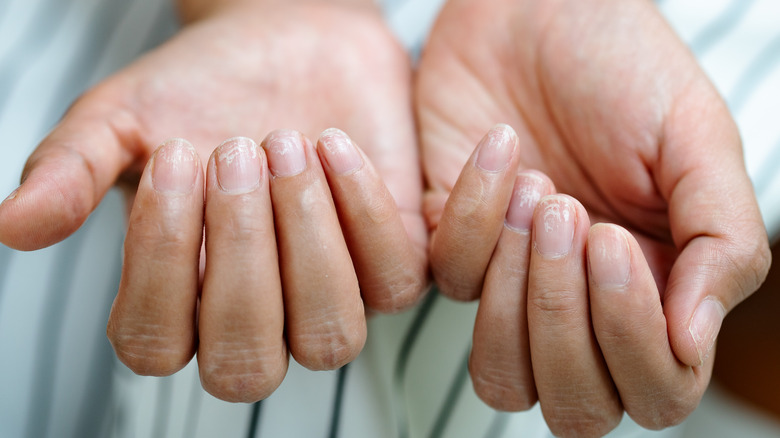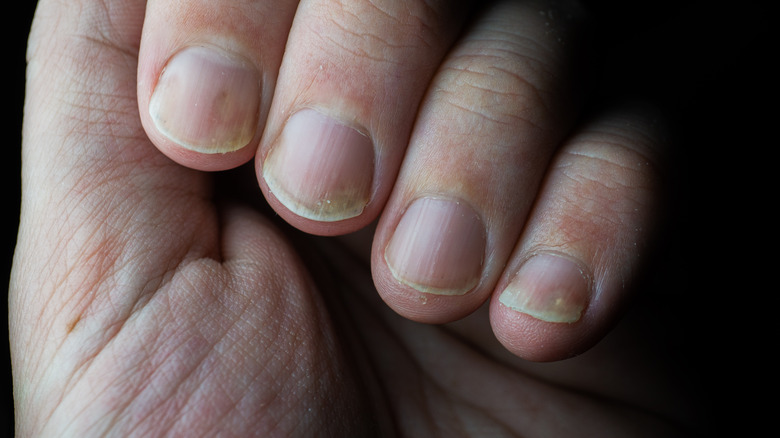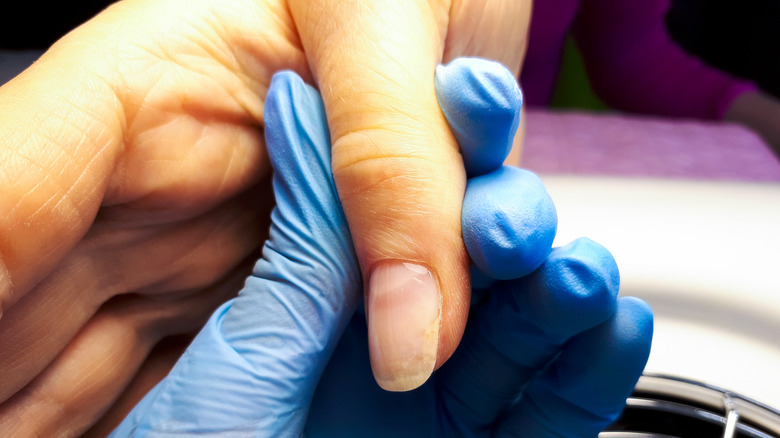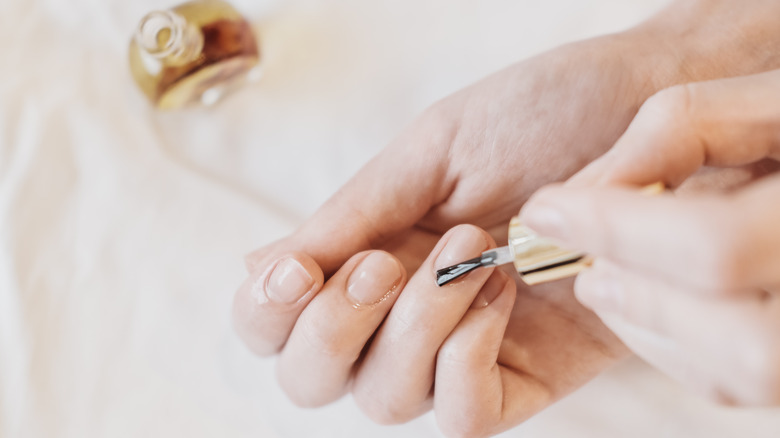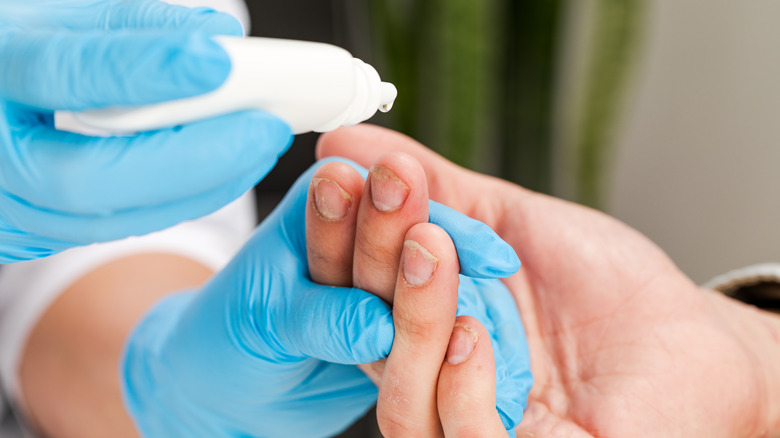Could Psoriasis Be The Cause Of Your Nail Issues?
The appearance of your nails can be a significant indicator of physical well-being. Aside from the occasional fungal infection, which can be attributed to a manicure gone wrong, there are many other possible causes for nail issues. In fact, nail problems sometimes indicate something serious as many health conditions typically manifest in various parts of the body, including the nails. Conditions such as diabetes, thyroid disease, and certain nutrient deficiencies, for example, can alter the appearance of your nails.
Another health condition that affects the nails is psoriasis, which is commonly associated with the skin and scalp. However, it is also common to develop psoriasis on your nails. Nail psoriasis leads to an array of symptoms that can be embarrassing and also concerning as symptoms of nail psoriasis can be difficult to treat. These symptoms can be uncomfortable, painful, and may worsen over time, which is why seeking out a health professional is highly recommended if you suspect you have signs of nail psoriasis. Here is what you need to know about nail psoriasis and what to do about it.
What is nail psoriasis?
Nail psoriasis is a common condition that is found in over 50% of individuals with psoriasis, according to the Cleveland Clinic, and it can affect your fingernails and toenails. Although nail psoriasis may appear fungal, this type of psoriasis is not a form of fungus but rather an autoimmune condition. Nail psoriasis develops in various ways, which is why it can be difficult to diagnose without professional examination.
For instance, you may notice discoloration of the nail beds and they can appear yellow, pink, red, or brown. Pitting or dents in the nails also other common symptoms associated with nail psoriasis and they vary in number, size, and depth. You can also develop crumbling nails, thick nails, Beau's lines, which causes horizontal grooves along the nails, or onycholysis, which occurs when your nail starts to separate from the nail bed as the skin underneath the nail begins to peel. These symptoms can feel uncomfortable or painful, and it is common for symptoms to impair everyday use of your hands if they become severe.
What causes nail psoriasis?
Typically, adults under the age of 50 regenerate new skin cells every 28 to 42 days (via Healthline). For those with nail psoriasis, new cells develop every three or four days, which leads to psoriatic symptoms such as scaly patches, discoloration, and pitting. Although the direct cause of psoriatic conditions are not fully known, this rapid cell regeneration is generally understood to be a result of immune system complications. Specifically, the immune system is unable to recognize the difference between foreign cells and your own cells, which causes the immune system to attack your body's normal cells (via John Hopkins Medicine).
Although nail psoriasis can affect anyone, there are some groups of people who may be more susceptible. For instance, you are more susceptible to developing nail psoriasis if you already have general psoriasis or other autoimmune diseases. Those over the age of 40 are especially vulnerable, along with males and individuals who have family members with a history of psoriasis.
How to diagnose nail psoriasis
In many cases, nail psoriasis acts as an early sign of psoriatic arthritis, so it is important to consult a health professional if you observe signs of nail psoriasis or worsening of symptoms. If you display symptoms of nail psoriasis, then you may also be at risk of developing other health conditions such as diabetes, high cholesterol, obesity, heart attack, and stroke, according to the Cleveland Clinic. For these reasons, it is important to consult a dermatologist or general practitioner.
A dermatologist will conduct an examination or take samples to make an official diagnosis. They will also look for possible signs of infection, as nail psoriasis can cause onycholysis, or separation of the nail from the skin, which leaves you vulnerable to bacterial infection. If you notice signs of onycholysis and see that your nail begins to turn dark in color, then it is highly recommended that you visit a clinic to test for infection.
Treatment options
Thankfully, there are several treatment options available for reducing symptoms of nail psoriasis. Common treatments include topical creams, injections, and oral medication. Your doctor or dermatologist may prescribe a corticosteroid cream or retinoid. If your nail psoriasis causes onycholysis, then a health professional may prescribe an anti-inflammatory cream that is designed to slow cell production, such as Anthralin, per Healthline.
Corticosteroid injections are also administered to treat specific symptoms such as nail thickening, onycholysis, and nail ridges. Typically, if your symptoms persist with topical treatments and injections — or if your symptoms are severe — your dermatologist will prescribe an oral medication such as a systemic or biologic drug. Systemic medications affect the entire body to treat your skin and nails, while biologics are immunosuppressants so they affect the specific part of the immune system that is responsible for psoriasis.
Newer treatment options such as phototherapy and pulsed dye laser have been proven to reduce symptoms of nail psoriasis. Phototherapy or PUVA uses ultraviolet rays to penetrate the nail and reduce symptoms of onycholysis and discoloration by decreasing cell production. Pulsed dye lasers, on the other hand, treat nail splitting or raised nails caused by subungual hyperkeratosis (nail thickening) by reducing inflammation, according to a 2021 study published in the European Journal of Molecular and Clinical Medicine.
Home remedies
There are many cases where home remedies have been effective at treating symptoms of nail psoriasis. For instance, according to a study published in the Journal of the American Medical Association (JAMA) of Dermatology, a Chinese herb called indigo naturalis was shown to reduce symptoms of onycholysis and nail thickening when extracted in oil. This study indicates that when indigo naturalis extracted in oil (Lindioil) is consistently applied to the affected nails, it is more effective at improving symptoms than topical calcipotriol, a common topical treatment that contains vitamin D.
Other popular home remedies include aloe vera, turmeric, and dead sea salt. Aloe vera and turmeric both possess anti-inflammatory properties that, when applied consistently and liberally, may reduce symptoms. Turmeric also possesses antifungal properties that decrease the risk of developing a fungal infection. Dead sea salt reportedly improves symptoms of nail psoriasis by reducing inflammation and softening the skin, similar to Epsom salt baths. While these home remedies may help reduce inflammation, and thereby relieve symptoms, there is a general lack of research on the efficacy of home remedies for the treatment of nail psoriasis.
Maintenance tips
If you exhibit certain symptoms of nail psoriasis, there is an increased risk of infection. Onycholysis, for instance, increases your chances of developing a bacterial infection as it leaves a gap between the nail and underlying skin. It is also possible to develop a fungal infection that causes similar symptoms to nail psoriasis, according to The Psoriasis and Psoriatic Arthritis Alliance. In fact, about 35% of individuals with nail psoriasis also develop a fungal infection at the same time. Onychomycosis, a type of fungal infection that causes the nails to thicken, is seen in individuals who also display symptoms of nail psoriasis. In this case, it can be tricky to determine the cause of your symptoms. As a result, this can make treatment difficult.
It is possible to prevent infection through routine maintenance, care, and hygiene. For example, keep your nails trimmed and frequently clean the debris from underneath the nails using soapy water. Moisturize your nails and cuticle by applying an emollient and try to avoid damaging your nails by wearing gloves. You should also avoid picking at your nails and wearing fake nails that can trigger onycholysis. Regular filing, moisturizing, and buffing can also improve your nails' appearance.
That said, there is no certain way to prevent nail psoriasis. According to the Cleveland Clinic, flare-ups and periods of remission are common, though, symptoms can be managed through consistent treatment and regular maintenance.
